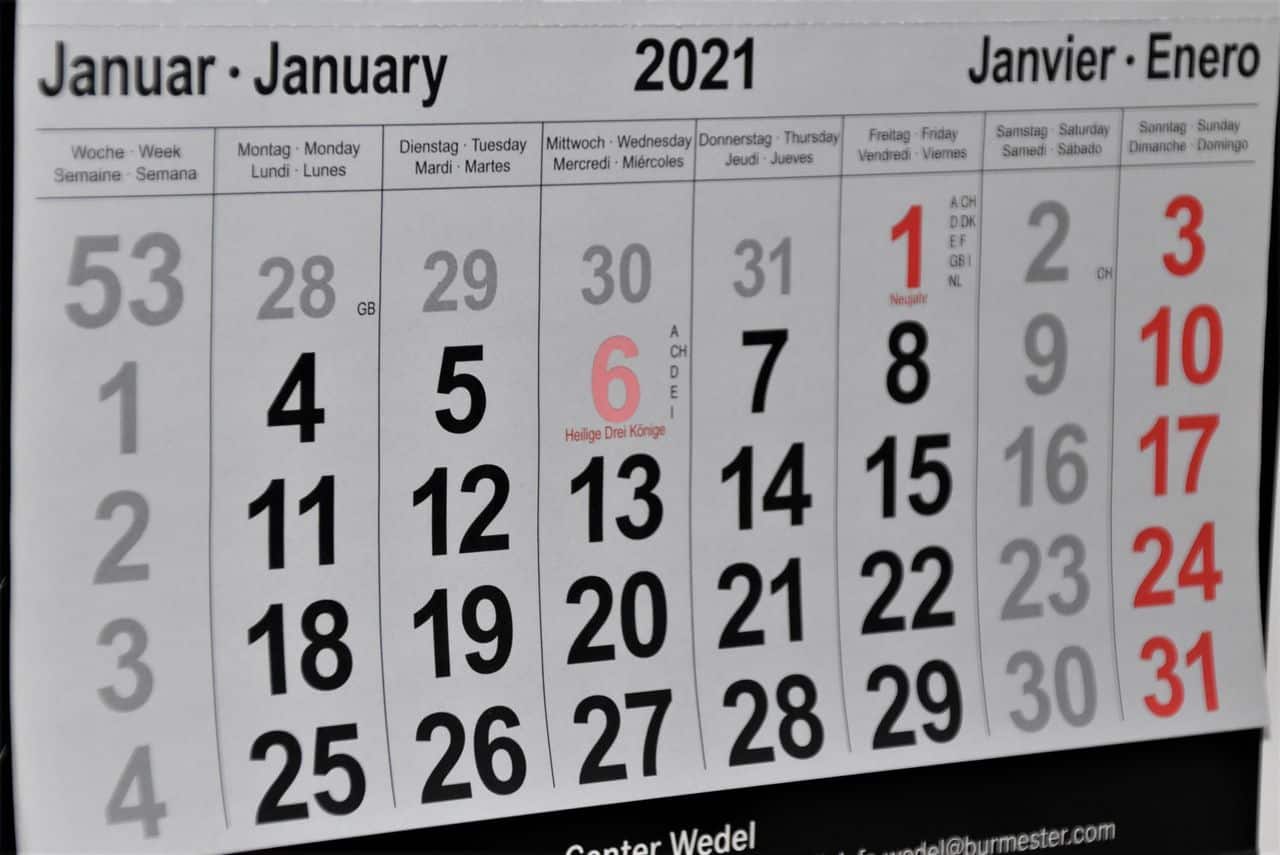
Learn All the Months of the Year in Spanish
DATE:
The months of the year in Spanish are, luckily, incredibly similar to the ones in English. Since both the English and the Spanish words come from Latin (check our guide on the history of the Spanish language for more on that), you’ll be able to master the Spanish months in no time.
In this article, you’ll learn all the Spanish vocabulary for los meses del año, plus learn a little bit of the grammar on how to use them. So let’s get right to it!
Months of the Year in Spanish
|
Spanish |
English |
|---|---|
|
Enero |
January |
|
Febrero |
February |
|
Marzo |
March |
|
Abril |
April |
|
Mayo |
May |
|
Junio |
June |
|
Julio |
July |
|
Agosto |
August |
|
Septiembre |
September |
|
Octubre |
October |
|
Noviembre |
November |
|
Diciembre |
December |
As you can see, the months in Spanish are pretty similar to the ones in English. For the most part, the only change in the Spanish vocabulary compared to English is the change in vowels. And you should look out for small changes so you don’t accidentally say april, may instead of abril, mayo.
Since the months in Spanish share a common root, this becomes a great opportunity for students to learn Spanish pronunciation with this vocabulary. It won’t take you very long to master the different Spanish words, so you can focus on making sure you are saying them perfectly!
For example, make sure you are saying agosto and not ah-guh-sto. The same goes for octubre, not ahk-tu-bre. These tend to be the most difficult months for Spanish learners to say correctly, so the best time to perfect your pronunciation is right from the beginning!
Now that the easy part is out of the way, let’s look at how you can use your new Spanish vocabulary correctly.
Grammar Rules
The first important thing to know about the months in Spanish is that you do not capitalize them unless they are at the beginning of the sentence. For example:
- Llueve mucho en abril. – It rains a lot in April.
- Los niños tienen vacaciones en julio. – Children have a vacation in July.
- Agosto es el mes más caluroso del año. – August is the hottest month of the year.
Unless the month is the first word in the sentence, they should be in lowercase. The same goes for the days of the week, as well. Little things like this are important to know since the Spanish language, like all languages, has its own rules for writing that make a big difference!
One final thing to note, grammatically, is that all the months are masculine and almost always are going to be singular.
How To Write Dates in Spanish

The most common way of writing dates in Spanish will follow this format:
el + número + de + mes + de + año
All you have to do is replace the day, month, and year in that formula. Here are some examples to look at:
- La segunda guerra mundial terminó el 2 de septiembre de 1945. – The second world war ended on September 2nd, 1945.
- Empezó el confinamiento en España el 14 de marzo de 2020. – The lockdown started in Spain on March 14th, 2020.
- México se independizó el 16 de septiembre de 1810. – Mexico became independent on September 16th, 1810.
For exact dates, you can use that formula from above and you’ll never have any trouble. One thing to notice here is that you don’t need to use the preposition “en” like you would in English. You should say phrases like el 16 de septiembre de 1810, not en el 16 de septiembre de 1810.
El día X
Another way to talk about dates in Spanish, when referring to a specific month is “el día X”. Here are some examples:
- El día quince (15) tengo cita con el dentista. – On the 15th I have a dentist appointment.
- El día siete (7) es festivo. – On the 7th it’s a holiday.
- El día ocho (8) vienen mis amigos a visitarme. – On the 8th my friends are coming to visit me.
Here, it’s even easier than it is in English because you don’t need to say “el séptimo” for “The seventh”, you just say “el día X”. This is great news for learners, since the ordinal numbers in Spanish can be a little tricky.
El 5 de mayo
Finally, if you want to specify a date in any month, you just follow the same pattern as earlier and leave out the year. This is important to remember since it’s the opposite of how it’s often said in English.
- El 25 de diciembre es Navidad. – The 25th of December is Christmas.
- Mi cumpleaños es el 17 de marzo. – My birthday is the 17th of March.
- El 8 de enero es un sábado. – The 8th of January is a Saturday.
Make sure to remember this format so you don’t end up trying to say “julio cuarto” instead of “el cuatro de julio”.
DID YOU KNOW…?
As a side note, el 5 de mayo celebrates the Mexican town of Puebla’s victory over the French army and is not Mexico’s independence day. In fact, it’s not even a holiday in most of the country!
Abbreviating Dates in Spanish
In order to abbreviate dates, the Spanish months will go after the day. This means that usually it will be day-month-year format, just like in British English. So for example, October 22nd of 1985 would be: 22/10/1985.
This is definitely important to keep in mind if you are ever reading any dates in Spanish, you don’t want to get any mix ups!
Roman Numerals
Although not commonly used anymore, sometimes you may find people using Roman numerals to replace the month in the above format. So the previous date might be written as 22/X/1985.
In recent years, most people have stopped doing this, but some older generations might still have this habit and you might find it in older textbooks.

A Year’s Work Complete
That’s all there is to know about the months of the year in Spanish! As you take more Spanish lessons, you might find that there are some slight variation in how people write the months, but that’s a normal change.
Just like in English, sometimes the way to use basic words can change across dialects, so the best way to get better is by practicing the months of the year in Spanish.
If you want to work on your language skills, go ahead and sign up for a free private class or a 7-day free trial of our group classes so we can test your ability to say the months in Spanish and the days of the week!











